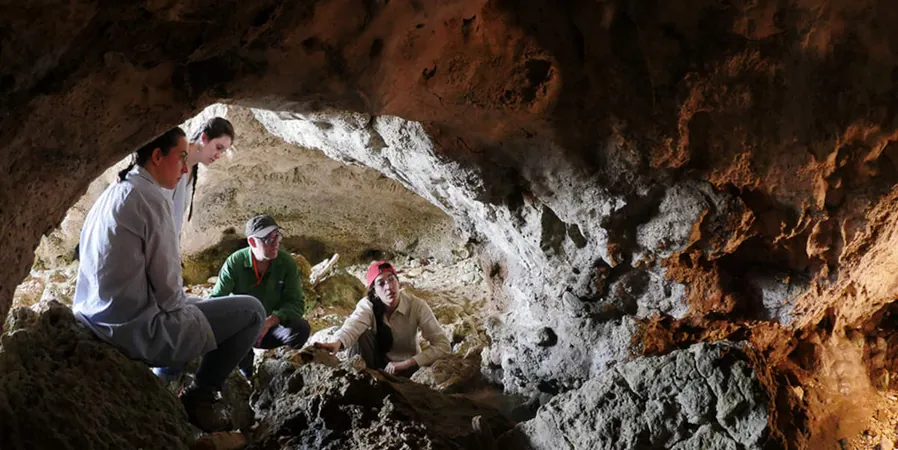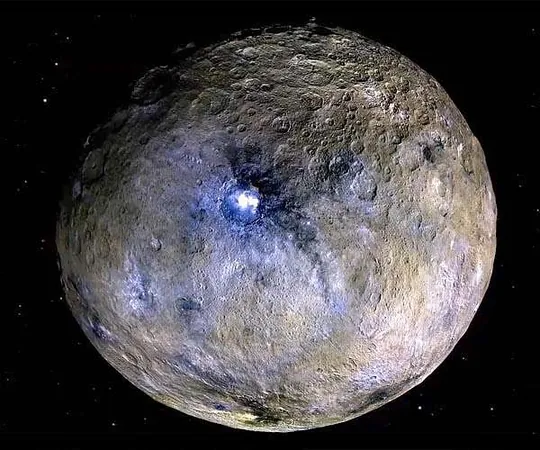
Groundbreaking Discoveries in Sicily's Underwater Caves Uncover Secrets of Early Human Migration
2024-10-11
Author: Sarah
Introduction
A team of archaeologists from Washington University in St. Louis has made remarkable strides in uncovering new insights into the earliest residents of Sicily through archaeological surveys of coastal and underwater caves. Their findings challenge previous assumptions about human migration patterns in the Mediterranean, shedding light on how Homo sapiens may have reached the island.
Research Overview
The research, published recently in the journal PLOS ONE, meticulously examined 25 caves and rock shelters, some that had not been studied since their discovery between 1870 and the 1990s. By conducting fresh surveys of land and underwater areas, researchers identified three new sites that are believed to harbor significant archaeological sediments.
Importance of Community Migration
Ilaria Patania, an assistant professor of archaeology and lead researcher, emphasized the importance of identifying not just individual migrants but entire communities. "Understanding when Sicily was initially colonized is critical to mapping the broader patterns of early human expansion across the Mediterranean region," she explained.
The Journey to Sicily
Sicily is often regarded as one of the earliest Mediterranean islands occupied by human ancestors. However, the specifics of how these early migrants made the treacherous two-mile journey from mainland Italy remains a mystery. The water crossing would have posed extreme challenges, potentially deterring early humans from settling on the island.
Rethinking Migration Routes
The new underwater discoveries open avenues to rethink the routes early humans may have taken, particularly as previous studies primarily concentrated on northern entry points. T.R. Kidder, a co-author of the study, highlighted that the assumption that southern coastal sites would be too eroded to provide valuable data was proven incorrect. "Finding underwater sites allows us to explore migration pathways that were previously overlooked," he said.
Historical Context
Historically, the Sicily Strait has been associated with perilous water crossings, vividly illustrated in Homer's "The Odyssey," where Odysseus battled mythical sea monsters. Today, thousands of modern migrants undertake similar journeys, often tragically losing their lives in the process. Patania, a native Sicilian, reflects on the dual nature of the sea that has both provided sustenance for generations and presented peril.
Looking Ahead
As the research unfolds, various hypotheses are being reconsidered. Humans are believed to have settled in Sicily around 16,000 years after the last glacial maximum, a timeline that raises questions given that predecessors ventured into Siberia approximately 30,000 years earlier. This discrepancy suggests that humans may have arrived in Sicily significantly earlier than currently documented, though the means and direction of their arrival remains speculative.
Collaborative Efforts
Patania and her team are undertaking a long-term project focused on early human occupation in Sicily. They have already pinpointed over 40 sites of interest, collaborating extensively with local historians, recreational divers, and fishermen to enrich their findings.
Recent Excavations
Recent excavations at the southernmost site named Corruggi revealed crucial artifacts, including the remains of a European wild ass and ancient stone tools, which may provide insights into the human migration route towards Malta. The project team anticipates further excavations to shed light on how early humans adapted to the ever-changing environment characterized by glacial impacts and seismic activities.
Conclusion
This groundbreaking research not only illuminates the underexplored history of Sicily but offers new perspectives on how early humans navigated and thrived in challenging and unpredictable settings. With ongoing explorations and analyses, Sicily could become a critical focal point for understanding human migration and settlement patterns in prehistoric Europe.
Call to Action
Stay tuned as we dive deeper into the mysteries of human history, revealing astonishing secrets buried beneath the waves!


 Brasil (PT)
Brasil (PT)
 Canada (EN)
Canada (EN)
 Chile (ES)
Chile (ES)
 España (ES)
España (ES)
 France (FR)
France (FR)
 Hong Kong (EN)
Hong Kong (EN)
 Italia (IT)
Italia (IT)
 日本 (JA)
日本 (JA)
 Magyarország (HU)
Magyarország (HU)
 Norge (NO)
Norge (NO)
 Polska (PL)
Polska (PL)
 Schweiz (DE)
Schweiz (DE)
 Singapore (EN)
Singapore (EN)
 Sverige (SV)
Sverige (SV)
 Suomi (FI)
Suomi (FI)
 Türkiye (TR)
Türkiye (TR)